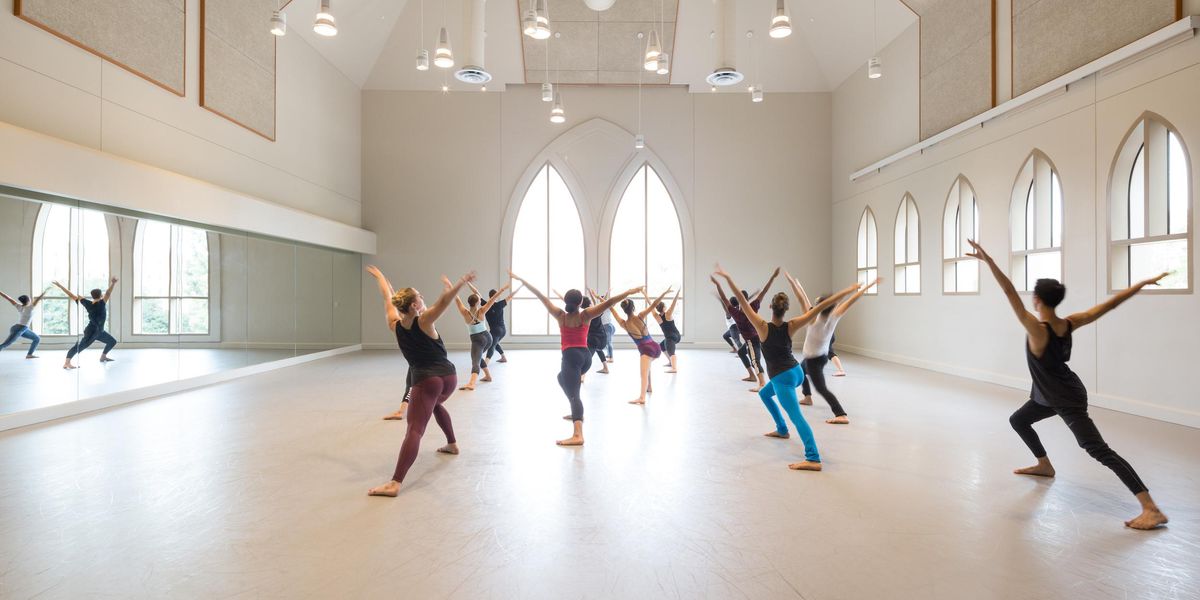James Sewell Ballet
TEK BOX
Minneapolis, MN
February 17–26, 2012
Performance: Feb. 19, 2012
James Sewell’s generosity was evident all over the place during his annual Ballet Works Project performance. First, there’s the brand new TEK BOX, a laboratory theater he created in the Hennepin Center for the Arts (which also houses the new Cowles Center for Dance) that aims to facilitate the development of new work in an intimate, low-risk environment. Second, each year Sewell turns his eight-member company over to Twin Cities’ choreographers to experiment with new ideas. This year’s artists included two company members, co-founder Sally Rousse and Nic Lincoln, and two of the area’s most innovative dancemakers, Karen Sherman and Eddie Oroyan.
It’s always enlightening to see finely honed ballet dancers cross the threshold into new movement vocabularies, especially with the openness and spirit of adventure that is part of the Sewell dancers’ modus operandi. While none of the five works on this program wandered into wildly new territory, each contributed a lively mash-up of styles and genres.
Oroyan’s freewheeling We Orbital Things sends six dancers dressed as airline attendants through text by Carl Sagan about the Milky Way and music by Ratatat and Lucky Dragons. Oroyan’s formal structuring co-exists with the kind of obsessive free play of kids inventing a game, then strictly reinforcing the “rules” they make up as they go along. The fluid formations, witty partnering, and genial athleticism don’t add up to much but are fun to watch.
Cory Goei, Chris Hannon, and Eve Schulte in
Sally Rousse’s
Freemartin Twin
Rousse’s Freemartin Twin gets its title and its concept from the freaky occurrence of a cow giving birth to twin calves—a bull and a heifer—resulting in a sterile heifer who behaves like a bull. The five dancers mix conventional ballet (bourrées, multiple pirouettes) with awkward calf moves. They mimic and mirror one another. But only in a duet for Rousse and Chris Hannon do we get an eerie sense of investigation: Who are we/am I? What strange synergy has created this new beast?
Nic Lincoln’s Apex, a solo for Eve Schulte, overlays oddly angled gestures with a sense of compression and portentous music that samples Cliff Martinez, The Cromatics, and Nine Inch Nails. Schulte gave it her all, but the piece never gained kinetic or emotional momentum. Next, Sabine Ibes filtered Argentine tango through contact improvisation to create a duet for herself and Sewell that crackled with soft-edged eroticism.
Karen Sherman’s How Social Hunters Die enfolds many wonderful things. Dancers nuzzle and manipulate one another gently in a kind of homage to Cunningham’s Rainforest; offer up strange, ritualized gestures; say things like “You think you’re important with your arms up like that?”; gently undulate their hips and attempt to walk on their knees while holding onto their toes. Mostly, though, Sherman illuminates inner dynamics that reveal multifaceted personas. Lincoln, simultaneously heroic, sly, and guileless, draws tattoos on another dancer. Rousse reveals a mischievous girl-woman who knows both more and less than everyone else onstage. And Corry Goei ends the piece with a remarkable solo to “Greensleeves” in which he manages to be courtly, campy, and emotionally ravaged.
Cory Goei in Karen Sherman’s
How Social Hunters Die
All photos courtesy James Sewell Ballet.
Pictured at top: Cory Goei and Eve Schulte in
Sally Rousse’s
Freemartin Twin




